Learning About the Figure from Picasso's Sculptures
Seeing the current retrospective of Picasso’s sculpture at the Museum of Modern Art reminded me of a graduate school experience, because as I wandered through the show I saw work that cleverly illustrated problems that sculptors would need to solve and questions they might have to answer in the cour

I was a teacher’s assistant for an introductory sculpture class while I worked on getting my MFA at UC Irvine in studio photography. This class gave me a window into an entirely different discipline, that is, an approach to art making. Seeing the current retrospective of Picasso’s sculpture at the Museum of Modern Art reminded me of that experience, because as I wandered through the show I saw work that cleverly illustrated problems and questions that sculptors interested in abstracting the human form would need to solve and answer. How does one think about scale and its relation to drama? How much of the figure might be represented by drawing and how might that depiction intersect with the supporting material? What is the presumed angle of the viewer’s perspective and how might shifting that or multiplying it shape the work’s meaning? If you are a either a student or teacher of sculpture, concerned with representing the body I recommend you see this show. It’s a wonderful primer on innovative strategies.
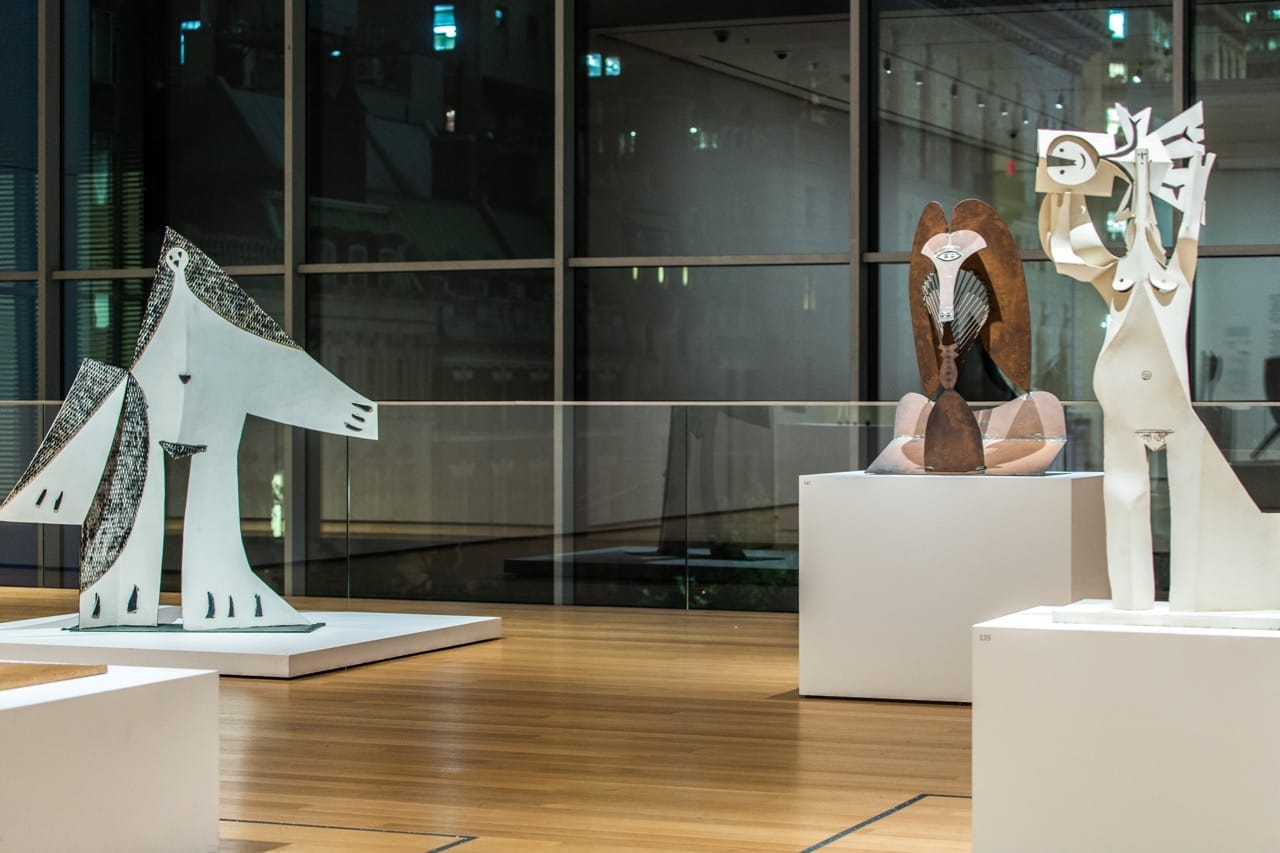
Take the objects displayed in the the gallery containing sheet metal sculptures: they demonstrate the useful tensions to exploit between the form of the substrate material and the pictorial scheme drawn on it. In some cases, such as “Woman with Outstretched Arms” (1961), the work has one element that pictorially is represented as an appendage, but conveys the sense of it being an “arm” because it is attached to the main “body” by a small joint. The other arm is painted on, while a dent in the middle of the form helps to make the figure, like the fleshly body, bilaterally symmetrical. This figure is articulated by the dialectic play between the mediums of painting and metalwork, play that makes it both absurd and charming.
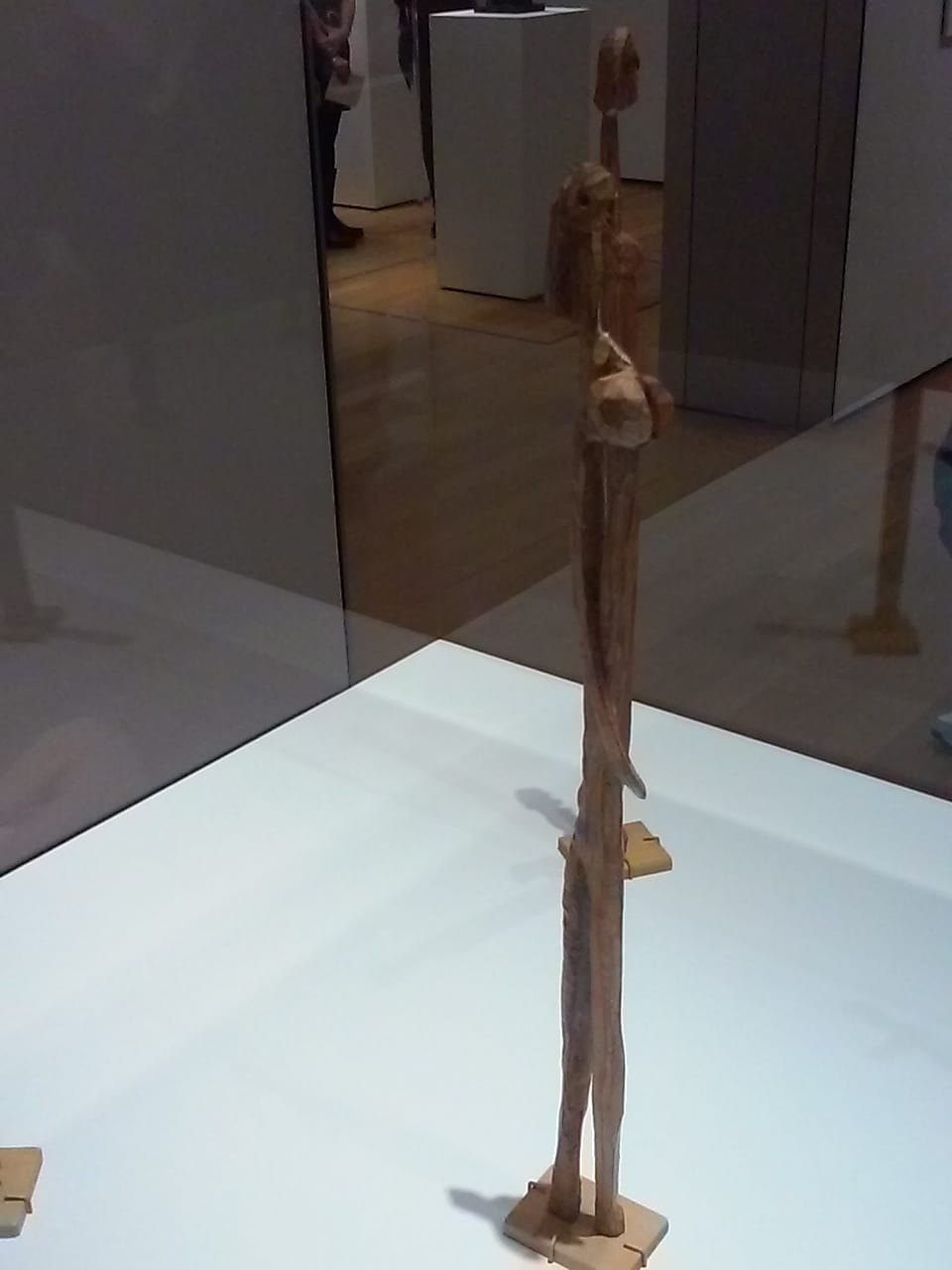
In “Woman with Child” (1961), Picasso uses negative space in combination with his drawing to depict the child figure as a kind of cartoonish cutout that’s all smiling, airy delight held over the mother’s head. The mother is made a surreal figure with an extended rectangle for a head, two lifted plates with holes for her breasts, one leg a straight rectangle with a bend to make a knee while the other leg is a strangely bent and angled trapezoid that structurally acts as support for the piece but pictorially makes her a grotesque figure. With the “Maquette for Richard J. Daley Center Sculpture” (1964), Picasso shaped and connected flat planes of oxidized steel to represent the fall of hair behind a woman’s head, the bridge of her nose flowing from her forehead, and her long neck ending at a right angle to another plane that is angled upwards and acts as the figure’s chest and shoulders.
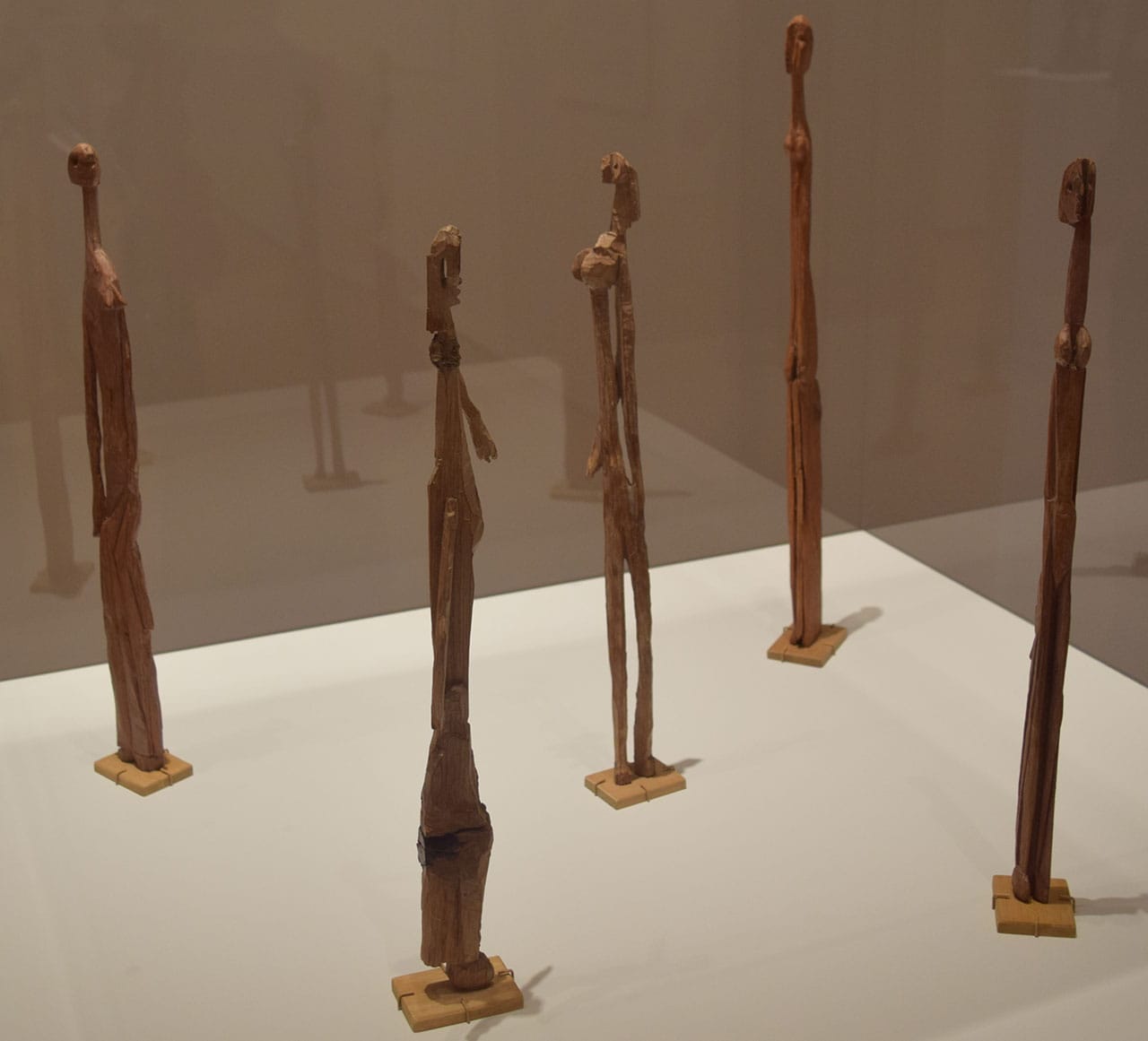
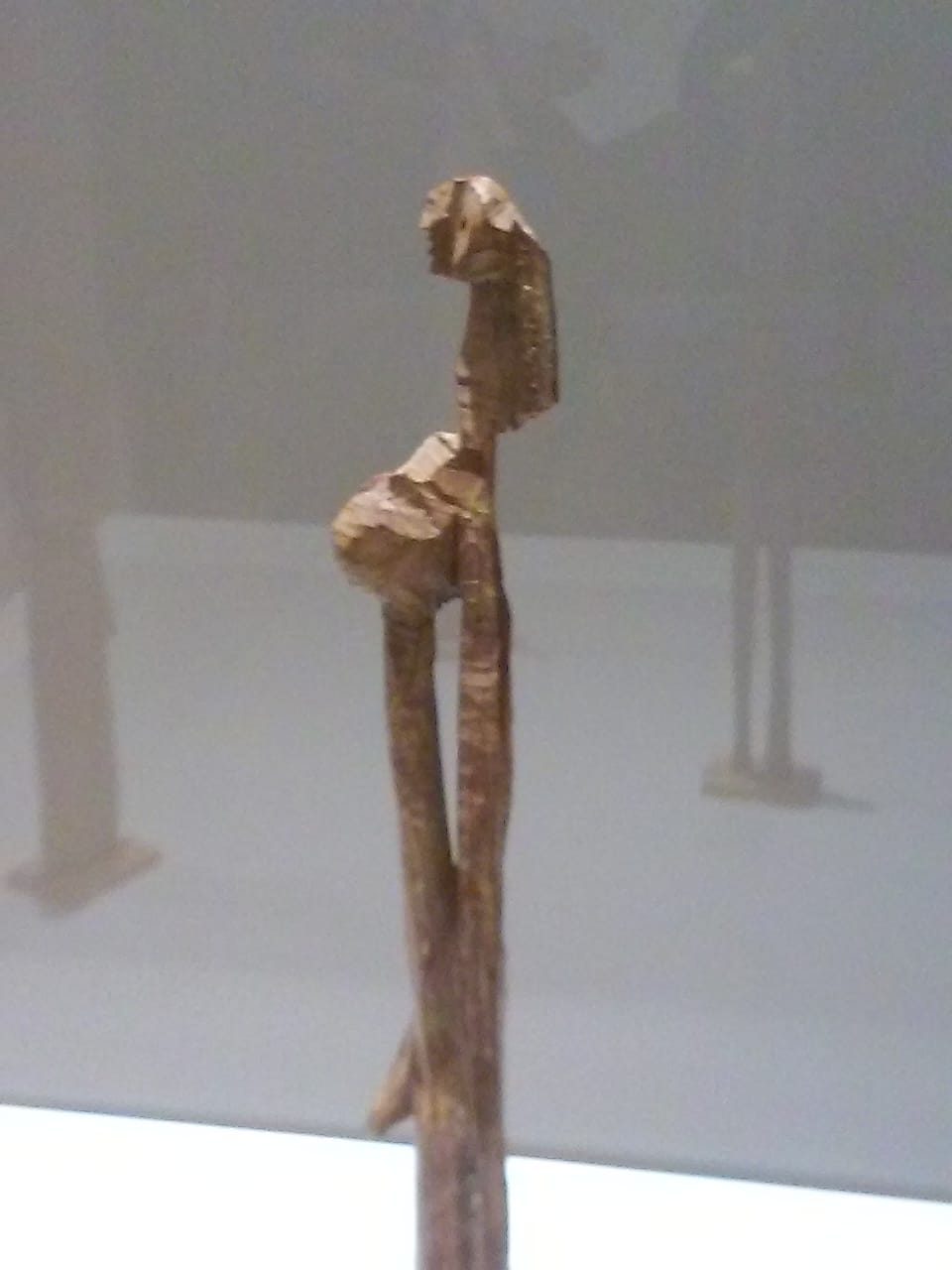
As you circle around the objects in that gallery, you see the artist thinking about the angle of view. The figures morph into refracted versions of themselves. The works that best demonstrate this are the ones made of carved fir wood, all titled “Standing Woman” (1930). They are all very thin, fragile seeming figures. One, seen from the front, looks proud but inscrutable, just a carefully poised head atop a long, regal body.
However, from another angle the breasts stand out more and make the figure seem like a barely balanced, oddly disproportional figure out of fantasy. From another angle the flange behind the head is more visible, as are the harsh cuts made into the head and along the neck to delineate the chest and shoulders. From this angle the object is much more poignantly abject.
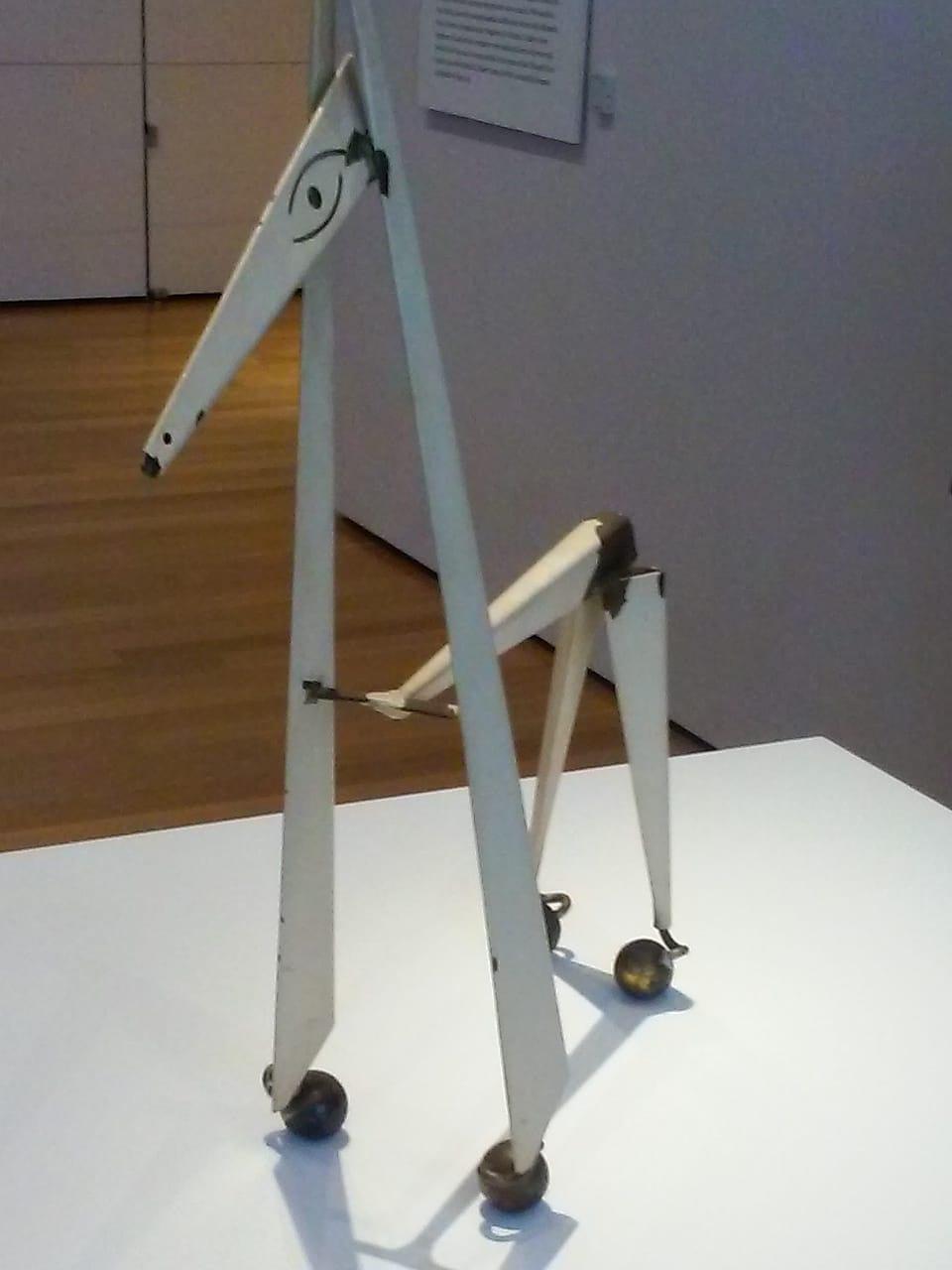
The demonstration of how little one has to do to suggest a face and features is also instructive. In pieces like, “Woman Carrying a Vessel” (1935), the face is simply well placed dots on a tiny plank of wood, arranged at a right angle to other adjoining planks of wood that make up the figure’s body. With “Figure” (1938) the artist uses the structural elements of screws and nails to make up the face, on a field of three painted planes of distinct colors, and suggests hair with a coil of rope. With “Little Horse” (1961), Picasso takes a found object and subtly transforms to make it into a representational figure. Using angled metal struts that look as if they belonged to a shelving unit, its the arrangement of the constituent pieces that make the object. The shorter struts are used to suggest legs, and a torso, and the longer ones the front of the horse morphing into the neck, with casters added for hooves.
The show reveals several ways to think about figuration and how it can be elaborated through formal elements. It’s worth seeing simply for these lessons.
Picasso Sculpture continues at the Museum of Modern Art (11 West 53rd Street, Midtown, Manhattan) until February 7.





